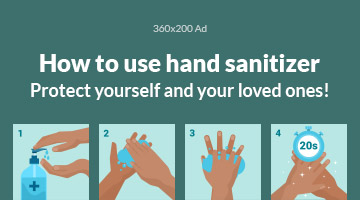Several treatments can be applied to improve this ocular pathology; using artificial tears is one of the most widespread. These bring a feeling of relief to people with SOS and provide greater visual acuity for the duration of its effects.
Artificial tears mimic the composition of tears as much as possible, helping to maintain moisture and lubrication of the ocular surface. Currently, there are both preservative-free and preservative-free tears on the market.
Preservatives in artificial tears are used to prevent contamination. If used frequently, they can irritate the ocular surface and even be toxic to it. People who need to use artificial tears daily should opt for those that do not carry any preservative: they do not cause any damage to the eye and do not create dependency.
Although artificial tears are one of the pillars in treating SOS, there are others such as stimulation of tear secretion, conservation of the existing tear, etiological treatment …
Tips to relieve dry eye symptoms:
Now that you know what dry eye is, what its causes are, and how it is treated, we leave you a series of tips to alleviate its symptoms:
Make a list of all the medications you take and talk to your doctor to see if any of them may be causing your dry eye.
Try to blink frequently, especially if you read or use an electronic device (computer, tablet …) for long periods. This way, your eyelids will spread the tears evenly.
Try not to rub your eyes; you will only cause yourself more discomfort
Wear sunglasses if you are outdoors. In this way, you will protect your eyes from both the wind and the sun. In the same way, protect your eyes with glasses when you bathe in the pool or the sea.
Humidify the air in your home
Avoid smoke, air conditioners, heating, fans … they dry out your eyes.
Incorporate foods rich in omega-3s, such as oily fish or flax seeds, into your diet, and you will notice some improvement in your SOS.
Follow these little guidelines, and you will see how your symptoms improve. And if not … do not hesitate to consult your ophthalmologist!
Tears are necessary to moisten the eyes and to remove particles that have gotten in. In addition, maintaining a healthy tear film in the eye is essential for good vision.
If you notice a lack of tears in your eyes, it may be because you suffer from dry eye syndrome. Dry eyes occur when the eye cannot maintain a healthy layer of tears, MedlinePlus experts explain.
Common dry eye symptoms include:
- Blurred vision.
- Burning, itching, or redness in the eye.
- Gritty or abrasive feeling in the eyes.
- Sensitivity to light.
Causes of dry eye syndrome
Dry eye tends to appear in many people who may be in good health, as it is a common condition, especially in older people. Thus, it can become common with age as hormonal changes cause the eyes to produce fewer tears.
Also, the dry eye symptom can sometimes be caused or worsened by a condition known as meibomianitis, which changes the normal tear film.
Other common causes of dry eyes are:
- Usually a dry environment or workplace (with wind or air conditioning), exposure to the sun.
- Smoking.
- Cold or allergy medications.
- The use of contact lenses.
Although dry eye can also be due to other less common causes such as heat or chemical burns; previous eye surgery; the use of eye drops for other eye diseases; and Sjögren’s syndrome, which is a rare autoimmune disorder in which the glands that produce tears are destroyed.
Once your healthcare professional has detected dry eye syndrome, multiple treatments can be carried out.
The first step in treatment is artificial tears. These come with both preservatives (in a screw cap bottle) and preservative-free (in a single-use jar). According to MedlinePlus experts, preservative tears are more convenient, although some people are sensitive to preservatives.
Many artificial tears can be used without a prescription, although it is best to consult a doctor or specialist.
These drops should be used at least 2 to 4 times daily. If the symptoms do not improve after a couple of weeks of regular use, you can consult a doctor for advice on how to increase the use of these drops in your case. Perhaps the specialist will recommend changing From preservative-free drops to preservative drops, or vice versa; I even tried a different brand of drops.
But, in addition, there are other treatments for dry eye syndrome such as fish oil 2 to 3 times a day; or glasses, goggles, or contact lenses that retain moisture in the eyes, among others.
Tips to avoid having dry eyes
MedlinePlus experts assure that the following routines can be carried out to prevent dry eye syndrome:
Give up smoking.
Avoid receiving indirect smoke, direct wind, and air conditioning.
Use a humidifier, particularly in the winter.
Cut down on cold and allergy medications that can cause dryness and make your symptoms worse.
They are purposely blinking more often.
Rest your eyes from time to time.
Regularly cleanse the eyelashes and apply warm compresses.
Stay away from dry environments.
Stay away from items that irritate your eyes to help prevent symptoms.
These professionals assure that, often, the symptoms of dry eye are due to the fact of sleeping with the eyes slightly open, although they emphasize that lubricating ointments are very effective for this problem, always using them in small amounts and before sleeping as long as avoid distorting vision.
Most people with dry eye syndrome have only discomfort, but you must visit a doctor if you think your condition has become complicated.







